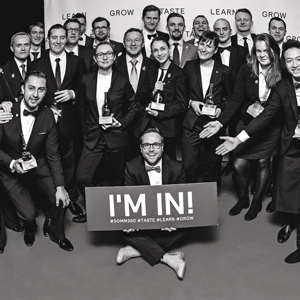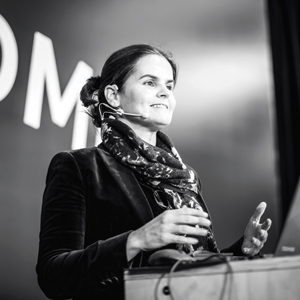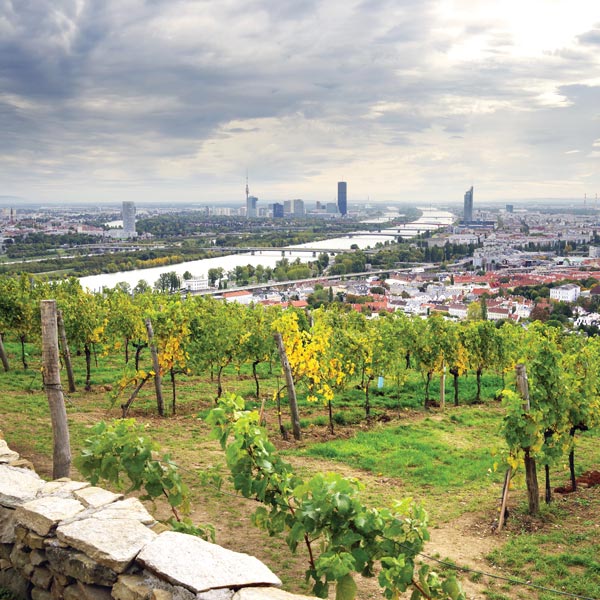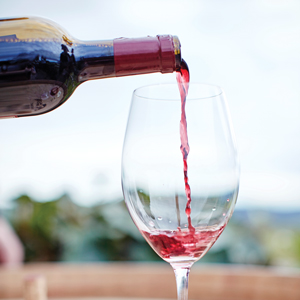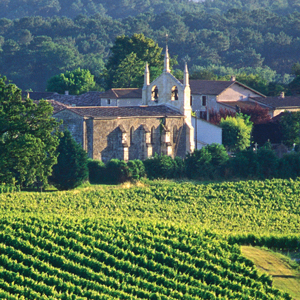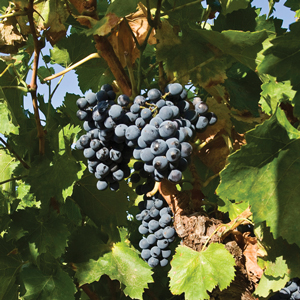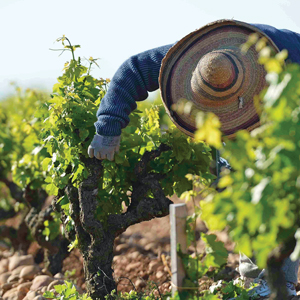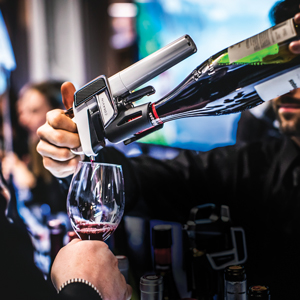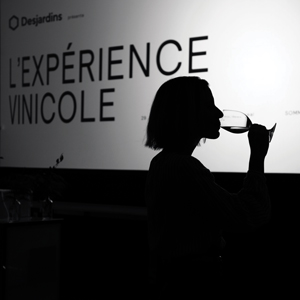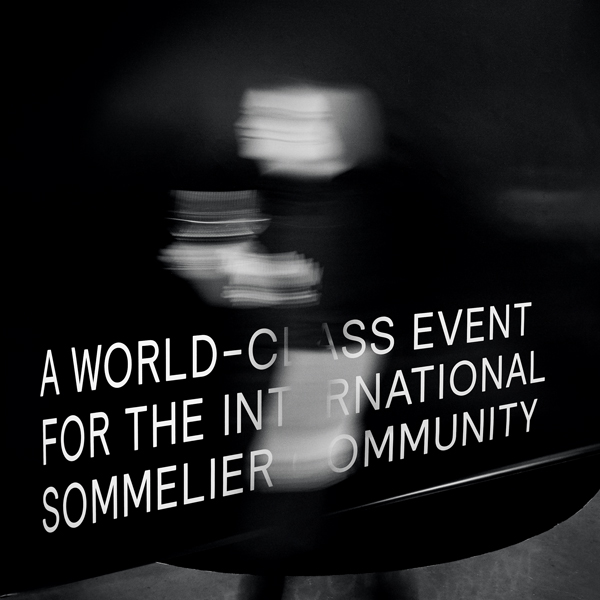SOMM360 is a platform for every sommelier seeking perfection through continuous education and training for competition.
Get the latest info about Somm360
© 2018 SOMM360


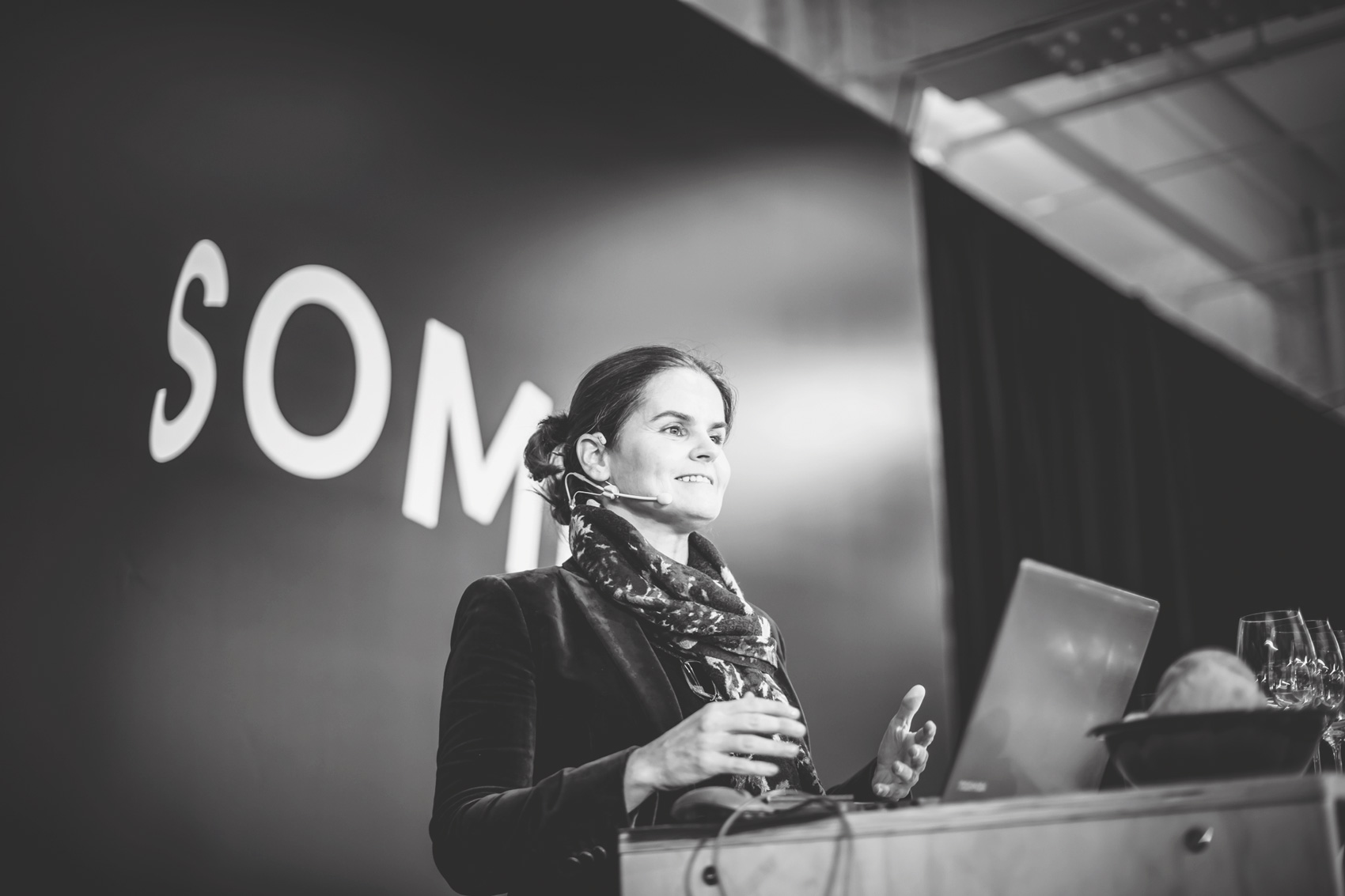
BLIND TASTE
THE DIFFERENCE
There was a bit of a Portuguese vibe for the theme of the third day of SOMM360. Wines from different regions of the country were presented in a blind tasting during a master class presented by Sofia Salvador, who has spent most of her wine career educating the public and the industry about the wines of Portugal. Participants were able to appreciate the rapid evolution of the latest generation of Portuguese wines and to learn of their incredible variety and styles. It was an impressive overview of a country whose vineyards still have many secrets to share.
Sofia Salvador
P
ortugal’s wine scene has been evolving rapidly recently. The country that famously gave us port and other fortified wines is now making a full range of wines, and young winemakers are shaking up traditions by mixing modernity and technological advances along with the traditions and inspiration of centuries of know-how. At the conference in Montreal, Sofia Salvador led an intense blind tasting that showcased the unique qualities and specificities of Portuguese wines.
Austrian wines are world-renowned, even if the country accounts for less than one percent of the global wine portfolio. Wine production in Austria could almost be described as artisanal, since it is practised on such a small scale: the average winery size is only about 3.22 hectares. But its superior quality makes up for its modest quantity. The country continues to move toward organic production or minimum intervention: 14.2 percent of its wines are organic and 79 percent are crafted with minimal intervention.
The Portuguese wine evolution
Wines of Portugal have as their motto “A World of Difference,” and there are indeed many things that make their wines unique. The country boasts an amazing array of 250 native grape varietals, and its relative isolation means that few varietals from outside Portugal are planted. Sofia Salvador told the audience that not all these varietals are in use, “but we do have a genetic bank, and a lot of research is being done on these grape varieties. So we have this richness, which I think is one of our biggest treasures.” Another measure of Portugal’s viticultural wealth is the diversity of its wine regions. The country boasts 14 wine regions and 31 DOCs, each one different because of its climate, terroir and grape varieties. Of course, it was impossible to cover every region and each wine style in a two-hour master class, but Sofia Salvador managed to provide an informative overview of what is happening with Portugal’s wine industry today.
Vinho Verde: a unique style
The sommeliers and wine professionals at SOMM360 were treated to a virtual visit to several key wine regions through a series of four wine flights. To keep it interesting, Sofia Salvador had placed an “intruder” in each flight, and members of the audience were invited to guess which wine was different from the others and why. The participants quickly recognized the first flight as being from Vinho Verde, Portugal’s biggest DOC in the rain-washed northwestern part of the country. Sofia Salvador told the audience that the Loureiro, as well as the Alvarinho varietals, is considered a noble grape variety. “It is one of the grapes becoming very popular to be used as a single varietal in the Vinho Verde region. It is floral and fruity at the same time, while the Arinto, another grape often blended in Vinho Verde, is known for its acidity, minerality and structure.”
The Alvarinho grape dominates in the northern part of the region, along the Minho River. The climate there is warmer and drier, the soil mainly granite and the combination of grapes and climate makes for richer, fuller wines made dry and still. “Winemakers there create a fresh wine, but we see an evolution, with a bit more complexity, more body and a supple, velvety style,” said Salvador. She explained that Vinho Verde is a region but also a style: “light, fresh, with high acidity and aromas that can vary from tropical to citrus.”
Douro wines: more than ports
Just south and east of Vinho Verde lies one of the most famously rugged wine regions of Portugal, the Douro, named after the Douro River that winds its way through the mountainous terrain. UNESCO has declared it a World Heritage site because of the narrow stone-walled vine terraces cut into the steep river banks, some constructed 250 years ago. The region is influenced less by the Atlantic climate and more by the continental climate from the east. “The wines from the Douro are characteristically very intense, opaque mature wines,” she explains. “Until 30 years ago, the region was more famous for port wines, but it now also produces high-quality non-fortified wines, while using the same grape varietals.” Even the old, established wine families are producing more non-fortified wines here, alongside their ports.
Iulia and Bruno Scavo, SOMM360 Bootcamp participants
Another measure of Portugal’s viticultural wealth is the diversity of its wine regions. The country boasts 14 wine regions and 31 DOCs, each one different because of its climate, terroir and grape varieties.
The Douro river, Portugal
Salvador says winemakers are willing to try new styles, and she offered one wine in the flight that was almost a single varietal, composed of 95 percent Touriga Franca and 5 percent Touriga Nacional. It came from Douro Superior, one of the three sub-regions located close to the Spanish border, where conditions are almost desert-like with hardscrabble schist soils, typical of Douro. A large variety of local grapes is grown in these old vineyards, used for port and, more and more, for table wines. Typical Douro blends often include Tinta Roriz, Touriga Nacional, Touriga Franca and Tinta Barroca.
Salvador wanted to showcase a younger, modern and at the same time traditional style of Douro. “A few years ago, there was just a handful of producers making table wines, now there are hundreds; and while they used to sell thousands of bottles, now they are selling even more.” She describes it as a very attractive, easy-drinking style with good body and more acidity: made to please, lively and for everyday drinking.
Alentejo: Portugal’s biggest wine region
If the Grüner Veltliner grape variety is now considered one of the great white wines of the world, Austria boasts many unique indigenous varietals which help to reflect the country’s wine regions and terroirs and offer so many possibilities for today’s young, adventurous winemakers. The fact that production is often on such a small scale makes these wines even more special!
Tinta Roriz and Trincadeira are widely planted red grapes here, as is Touriga Nacional, with very dark fruit, but also with floral overtones. Alentejo blends can include international varietals such as Cabernet Sauvignon, Syrah and Alicante Bouschet, a red-fleshed grape from the south of France that has adapted well in Portugal, which adds structure, firmness and vigour to wines. Sofia Salvador reminded the participants that the winemakers are strong on marketing in Alentejo and its eight sub-regions. “The DOC is always Alentejo, but more and more producers are tending to put the names of the sub-regions on the label, so you can know the provenance and the different characteristics.”
A world of difference
Alentejo
The Dão region in north-central Portugal has an isolated sub-climate, because it is surrounded by mountains. The high altitude allows for slower ripening and a potential for elegant reds and whites.
Participants tasted a traditional method Blanc de Noirs made from the Baga red varietal. Sofia Salvador explained that Bairrada is home to Baga: “It is a grape with a lot of structure, good tannins, very good acidity, with a long aging potential. On the whites, the wines have a fruity, fresh, persistent taste. On the reds, they develop good tannins and make wines that can develop complexity with age.”
The Dão region in north-central Portugal has an isolated sub-climate, because it is surrounded by mountains. The high altitude allows for slower ripening and a potential for elegant reds and whites. The old style Dão wines reflect the terroir; but here too, winemakers are innovating. Encruzado is one of the most famous white varietals in Dão: “It can make light, fresh wines, but it can also develop richer complex wines when barrel-fermented,” according to Salvador. Dão’s reds include Touriga Nacional, Alfrocheiro and Tinta Roriz, and they are wines that can be drunk 20 or 30 years from now.
The Tejo region is in central Portugal, just east of Lisbon. Vineyards have been planted along the Tejo River on broad plains and riverbanks since Roman times. Fernão Pires, Arinto, Alvarinho and Verdelho grapes produce some of the region’s most refreshing white wines. Tejo’s native red grapes include Touriga Nacional, as well as Trincadeira, Castelão and Aragonez. They are grown on higher ground with poorer soil, where red varietals can thrive. Sofia Salvador stressed that the new generation of winemakers is producing much higher quality wines at very affordable prices.
A brief flight over the other regions
A time for exchanges
Photos: André-Olivier Lyra (Sofia Salvador picture and Iulia and Bruno Scavo picture), Gkuna /
dreamstime.com
(The Douro river), André-Olivier Lyra (event), Inaquim/dreamtime.com
Share this article:





